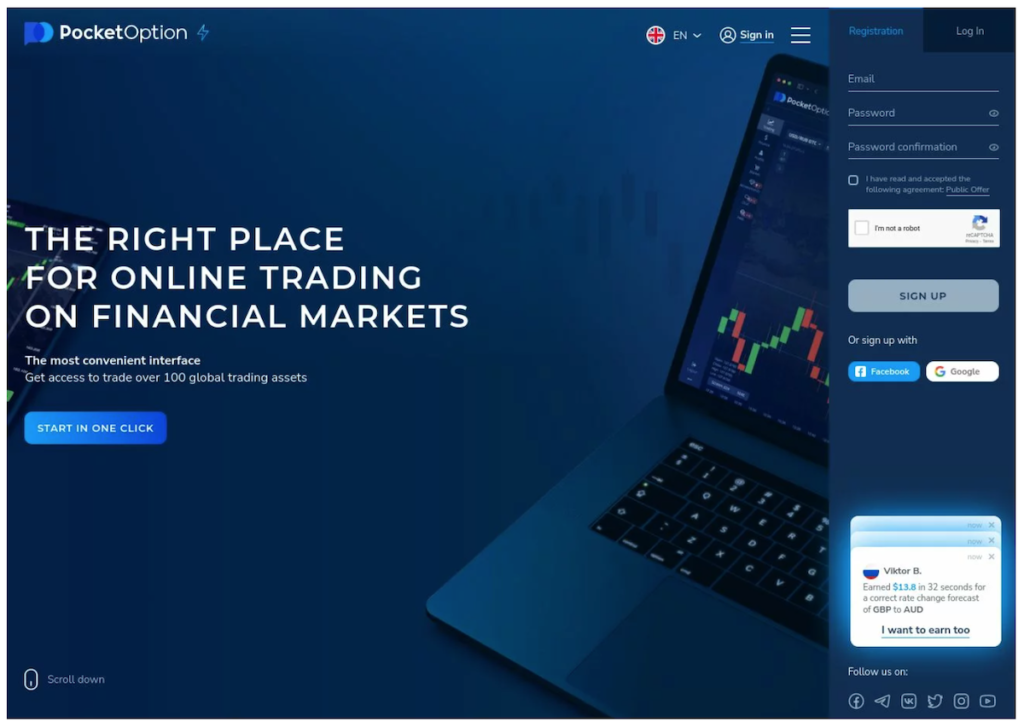If you are new to the world of finance, the trading of options of cryptocurrencies It can be intimidating. The trading options is risky, but it is not an excessively complicated activity. In fact, it is simpler than it sounds.
In many ways Of Fi and TradFi respond to similar factors. We are talking about financial spaces where similar dynamics are generated. In this sense, if you understand how options work in the traditional market, you will know how to do trading cryptocurrency options.
¿What is option trading?
Let’s start by defining what a value is. It is a broad concept, although we can define as negotiable financial asset securities as Actions, bonds or stock funds ( ETF ).
To a value whose price depends on a underlying asset ( which may be another value ), it is called derivative. In a way, a derivative is “ an asset within an asset ”, a kind of metavalor. There are various types of derivatives, such as swaps, the futures and, yes, the options.
As a financial product, an option gives the investor the right to buy or sell an asset at a specific price on a certain date. The term “ option ” implies that the holder you must decide what to do before stipulated maturity in the contract.
Said agreement implies the payment of a premium ( the cost of the option ), which allows the sale of a specific volume of the underlying asset on which the option is based. As we have commented, the price at which you can operate is also set, called “ exercise price ”.
Calls and puts
There are two basic types of options: calls ( purchase options ) and puts ( put options ). It should be noted that both a call as a put does not oblige to buy or sell, it only gives the right to do so at the exercise price set in the agreed period. In both cases, there are two parties involved: a buyer and a seller.
Let’s see an example:
Let’s imagine that a share is trading at $ 40 and we believe it will rise to $ 50. We could buy one purchase option (call) with an exercise price of $ 45. In the event that the asset reaches 50 dollars, we can buy it at 45 dollars, generating $ 4.80 profit ( discounted a hypothetical 20 cent premium ).
Under the contract, the counterparty would have to access the purchase for $ 45, which would imply a loss of $ 4.80. It could also be the case that our forecast was incorrect. If the action does not go up before the expiration date, we would lose at least the cost of the contract: $ 0.20.
The same would happen if the forecast were bassist and we would buy one put option (put). Let’s say that share is trading at $ 60 and we think it will drop to $ 50. Equally, we could generate $ 4.80 profit if we set a exercise price of $ 55 ( even if the asset reaches $ 50 ) and we pay a premium of 20 cents.
As in the previous case, the counterparty would generate losses equivalent to our earnings. You would also keep the $ 0.20 if the price doesn’t end up falling below $ 55.
ITM, OTM and ATM
When we buy one call, we hope to generate profits by taking advantage of the increase in the price of an asset. The process is simple: in view of a revaluation, we buy at a lower price. On the other side, there is a seller with a contrary forecast, although he can also assess the possibility that the price remains at the same level or does not reach the exercise price.
If we wanted to take advantage of a possible fall in assets, we would buy one put, which would increase its value as the price of the underlying asset falls. The counterparty also expects in this case that the price does not fall or, at least, that it does not vary, thus avoiding the execution of the contract.
The different scenarios that can occur are called ITM (In the Money), OTM (Out of the Money) and ATM (At the Money). The first term is used when the exercise price of a purchase option is less than the price of the underlying asset. Also used for puts when the exercise price exceeds that of the underlying asset.
In the reverse case, when the exercise price is greater or less than the underlying price ( depending on the type of contract ) we would speak of an OTM context. When both prices coincide, there is talk of ATM.
Binary, exotic and vanilla options

In addition to the two basic types of contracts (call and put), there are three general categories of options:
- Vanilla. They are the most common. According to the execution, they are divided into two subcategories: European ( only on the expiration date ) and American ( at any time before the expiration ).
- Exotic. They have specific conditions, such as barrier options ( include cancellation levels ) or Asian ones ( use averages to determine payments ).
- Binary. They are options based on ITM maturities. It is not an investment proper, since the trader you only have to accept the profit or loss previously set, which depends on whether the execution price and the current one coincide on the expiration date.
Notice
Many scams use binary options as a tool. To avoid risks, it is advisable to do trading only in DCM markets.
Cryptocurrencies Options
The trading of cryptocurrency-based options does not differ much from trading of traditional options. Contracts entitle the sale of an asset to a specific previous within a stipulated period. The difference is that this asset is digital. This implies some differences, such as the volatility or the spaces used to operate.
These are aspects that can be considered as advantages. Well managed, the extreme fluctuation of cryptocurrencies can translate into greater profit-making. Of course, the risk of generating losses is much higher compared to assets TradFi.
The technology reduces certain counterparty risks, which, in the case of traditional options, are conditioned by the management of OTC contracts. DeFi platforms use smart contracts to lessen the impact of this risk through fully automated and decentralized DOV structures.
Trading options: Strategies
Covered call
One of the techniques of trading of most popular options is known as covered call. Its operation is simple: is bought or holdea the underlying asset while purchase options are sold (call). It is an effective strategy if you are going to maintain a cryptocurrency in the long term, but you don’t expect it to revalue in the short term.
This type of operation is usually compared with the yield farming. Let’s see why. For example, if you have $ 1,000 in XRP and you don’t expect the price to rise, you can sell calls worth $ 20 at a $ 1,100 exercise price with a three-month maturity.
As long as the price remains below $ 1,100, the buyer is unlikely to not execute the contract – they could buy those XRPs at a lower market price. This supposes a profit generation $ 20 or, in terms of annual return, 8%.
If you had left your XRP in the purse, you would have generated much less, exactly $ 0. From this perspective, the covered call they are quite attractive. The intention is for the contract to expire without value, allowing make profits with premiums while maintaining ownership of the underlying asset as collateral.
Married put ( covered put )
The alternative to covered call is the married put, a strategy that consists of selling options put, which force you to buy the asset at the fixed exercise price. As in the previous case, this type of operation is only advantageous if the contract expires without value.
When a trader foresees that the price of the underlying asset will fall below the exercise price before maturity, may generate profits by selling puts. If the value of the underlying ends up falling, the option married put Has no sense. The objective is for the contract to expire without being executed, which allows obtaining the premium while maintaining the collateral.
Bull call spread
In an bullish context, a strategy known as bull call spread. It is implemented by buying two calls at different exercise prices. With this technique, profits are limited, but also the cost of operations derived from premiums.
The process is simple:
- Choose the asset.
- Buy an option call with an exercise price higher than the current price, paying the premium.
- Sell one call with a higher exercise price and the same expiration date as the previous contract, charging the premium.
Bear put spread
In a bassist setting, the alternative to call spread is the bear put spread. Before a price drop, you can buy two puts with the same maturity, but at different prices, the second lowest than the first. As in the previous case, it is a technique that reduces the cost of operations.
The generation of benefits depends on the difference between both prices, discounting premiums. There are other ways to optimize the trading options, forming a wide range of strategies of greater or lesser complexity: bull put spread, bear call spread, long straddle, box spread, etc.
¿Where to do trading options?
More and more platforms are trading offering cryptocurrency options. Next, we will see a list of the best exchanges to start operating options based on digital assets.
Bybit
Bybit offers European options on USDC and BTC. As we have seen, this type of contract can only be executed when the expiration date arrives. The operation has a cost depending on the type of associated commission:
- Trading: 0.03% (maker and taker).
- Delivery: 0.01%.
- Settlement: 0.2%.
StormGain
StormGain is a platform for trading aimed at all types of profiles, including investors long and short term. It allows generating benefits both in bullish and bearish markets thanks to its offer of derived products.
The complexity of the operation is flexible. It can be done trading spot, buying directly, or open leveraged positions ( up to x500 ) with the most popular digital assets of the crypto market.
Binance
Binance is one of the exchanges biggest in the world. Collaborates with a good number of MMs, allowing you to offer a wide list of products, including options with cryptocurrencies at a reduced cost ( un 0.02%,in the case of transactions ).
The trading of options on stablecoins in Binance it is simple. Prices, commissions and premiums are transparent, facilitating the calculation of potential profits and losses. These types of options allow traders enter and exit the market with more security in periods of discharge volatility.
OKX
OKX offers European options on various cryptocurrencies ( including BTC, ETH and SOL) and multiple maturities. Commissions vary by account type:
- VIP user: between 0.01% and -0.01% (maker) and 0.03% (taker).
- Standard user: between 0.02% and 0.015% (maker) and between 0.02% and 0.013% (taker).
VIP users are considered to be those who manage capital equal to or greater than $ 100,000 and move a monthly volume equal to or greater than $ 5 million. The one defined as standard user holdea less than $ 100,000 or not reach $ 5 million in volume of trading.
Lyra
Lyra is a AMM that allows traders operate options through a pool of liquidity. As protocol L2 of Ethereum, its commissions are significantly low, offering quite affordable operations. Options are negotiated thanks to a liquidity mechanism through which two ( purchase and sale ) counterparts are defined for a specific asset.
Dorpex
Dopex is a decentralized protocol developed to increase the level of liquidity and reduce risk exposure when it comes to doing trading of options. Its mechanism is based on pools liquidity ( calls farms on the platform ) with weekly and monthly blocking deadlines.
Use various types of strategies to incentivize liquidity providers, such as reimbursements. Passive income generation is part of the structure, mainly through the collection of commissions for the provision of liquidity and obtaining rDPX.
¿Is trading of cryptocurrency options profitable?
The basic operation of the options is simple, but there are factors that influence their prices. Inexperienced investors often run away from such products for this reason, as they consider them too complex compared to other instruments. The same does not happen with traders experienced, who often speak well of options, mainly for their profitability.
In general, the returns of the options exceed the cost, that’s why often used as coverage against potential losses. In fact, many professionals from trading they consider that the options present fewer risks than other types of instruments.
¿What is the reason for this contrast? In essence, any financial instrument is simple. It is their use that can be complex, as well as the functioning of the markets themselves. It is especially so for those who take their first steps in the trading, when techniques like arbitration or the coverage they are difficult to implement.
The emotion management it is another factor whose weight can condition the evolution of a novice investor. Fear of generating losses is usually the main element that hinders learning. Luckily, the demo accounts they allow operating in simulated environments without exposing real capital.



















